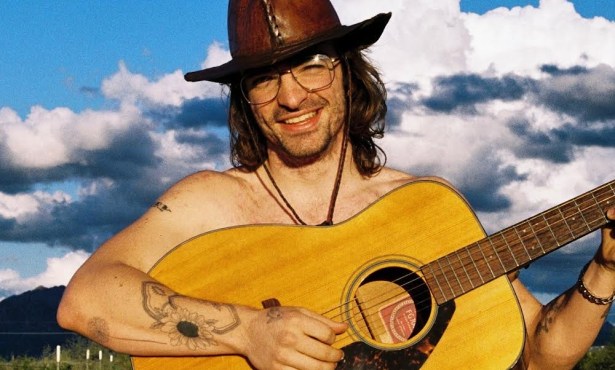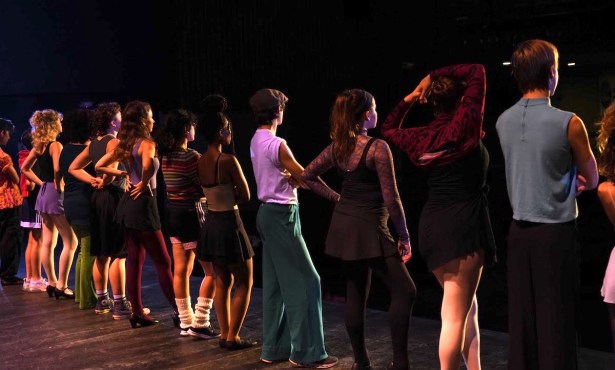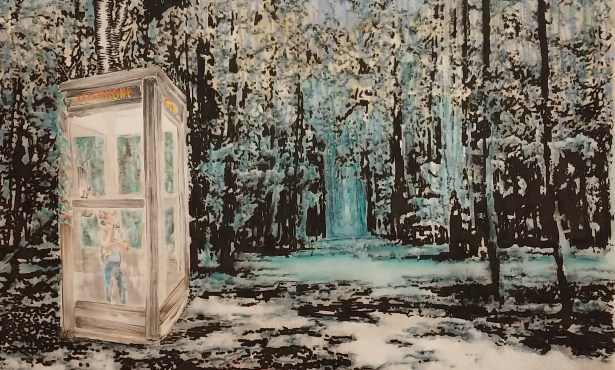The Smashing Pumpkins at the Fillmore San Fransisco
Billy Corgan Will Hear Your Pledge of Allegiance Now
Punctuated by equal parts frustrating awkwardness, comic self-deprecation, and floor-shaking moments of utter brilliance – in that order – the Smashing Pumpkins carved out nearly three hours of distortion-soaked jams Sunday before an affectionate, if largely subdued, audience at San Francisco’s Fillmore Auditorium.
It’s been 12 years since my older brother initiated my fourth-grade ears to the Pumpkins’ mainstream breakout Siamese Dream, and seven years since my mom waited in the car while some high school friends and I attended my only previous Pumpkins’ live experience. For the latter half my life, I’ve grown up with the Pumpkins’ sound and continue submitting to its indelible influence on my musical taste.
Waiting for front man Billy Corgan, drummer Jimmy Chamberlain, and new hires Ginger Reyes on bass and Jeff Schroeder on guitar to take the stage for the fourth performance of an 11 night sold-out residency, I felt as I imagine the moment before I walk into my 10-year high school reunion might feel. Each attendee is nervously optimistic he or she can reclaim past glory while avoiding the topic of past failures, and everyone is under the assumption that everyone else still cares.
The elephant in the audience was whether any of us would recognize the new Pumpkins, now missing founding guitarist James Iha and bassist D’arcy Wretzky, as the same we knew a decade earlier, and whose fault it would be if we didn’t.
“Welcome to the death and destruction show,” Corgan quipped as his first words to the crowd after a 30-minute blast of material from Zeitgeist, the resurrected band’s latest album. “We hope you find what you’re looking for.”
He was probably just trying to be funny, but the false dichotomy was an apt way to reassure his longtime fans and continue to irritate his equally rabid and numerous detractors; You will take what Corgan gives you, whether you like it or not.
Bouncing from new to old, b-side rarities to mainstream radio hits, Corgan kept a straight face for most of the first hour, trying his best to look dangerous. However, wrapped in a white full-length robe, draped loosely over a black and white stripped long-sleeve shirt and white carpenter pants, he was most believable – at times even downright charming – when cracking a wide grin.
Ironically, the mood on stage and in the audience lightened permanently after Corgan joked that a “good time” is not usually associated with a Smashing Pumpkins performance.
At the set’s halfway point, the band left a guitar-less Corgan with new keyboardist Lisa Harrington alone on stage. For a few moments, the crowd seemed worried they were in for a slam poetry reading that would align nicely with Corgan’s reputation for unrepentant self-indulgence. However, what we got was a hauntingly beautiful rendition of “Death From Above,” which appears as a bonus track on some versions of Zeitgeist. Corgan’s voice – frequently derided as an acid-singed nasally whine – exhibited impressive range and came off with a sincerity that better toned singers often lack.
New material was well-received and echoed thunderously in the tiny confines of the 1,250 capacity Fillmore, but the audience reserved significant reaction for older favorites “Bullet With Butterfly Wings,” “Today,” and “Tonight, Tonight” – the rendition of each resulting in an earthquake-like rolling of the Fillmore’s wooden dance floor under the crowd’s jumping feet. An electric version of “Disarm,” an explosive “Zero,” and an inspired “Drown” drew similarly spirited fan appreciation.
Returning for two encores, the Pumpkins first paired a new untitled tune with the b-side classic “Starla,” and for the second, Corgan delivered a rousing “Muzzle,” backed by Chamberlain’s particularly ferocious drumming.
While Corgan and company delivered the hits with incredible force – and in the process illustrated the remarkable staying power of the band’s best work – the songs everyone knew were sprinkled throughout the evening in such a way as to crush any fan momentum toward frenzy. For every one hit, the crowd patiently waited through two or three extended jams on unreleased tracks or lengthy re-workings of many songs that were never album standouts.
Diehard fans could deal, and there were many of those in attendance, but on balance, the set list failed to unite a room full of starved Pumpkins aficionados who felt like they had waited long enough for Corgan to showcase what he does best. Looking up at Corgan’s bald head, glowing and overexposed by the stage light glare, everyone could recognize the Pumpkins of yester decade. But like catching up with old high school pals 10 years down the line, some things are never quite the same.
Corgan definitely believes everyone still cares about him, and given his professional accomplishments, it’s not a hard argument to make that everyone should. As a defining character and architect of alternative rock during the 1990’s, the musician’s only real fault – besides frequent allegations that he’s an arrogant jerk – is that from album to album, he never tried to pull off the same trick twice. In many so-called fans’ eyes, it’s this musical evolution and Corgan’s changing taste that continues to rob them of what they originally liked best about his work.
If it’s fair to dismiss Billy Corgan and the reformed Smashing Pumpkins as mere echoes of a greater past, than it’s also fair to denounce all other artists whose work or focus changes for better or worse since the height of their popularity.
The Pumpkins showed they have one foot planted firmly in their successful history, but also one foot dangled fearlessly into the future. If old fans won’t follow the Pumpkins in a new direction, they are free to get out of the way.



